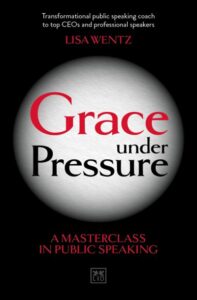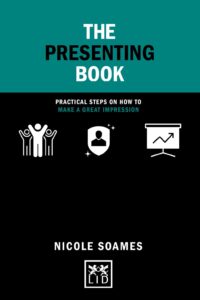|
How to lighten your presentation with some humour and reinforce your message
By Guest Contributor Glen Savage, Member of Toastmasters International
In a business presentation you have valuable information and ideas to communicate but does that mean you need to be serious throughout? I suggest not! An important distinction to make is between serious speakers and those who wish to be taken seriously.
In my experience, a little humour supports the gravity of a message, for many reasons.
Effective one-to-one communication depends on building rapport, creating a connection and building trust, and the same is true for presenting. Rapport one-to-many may feel different, but it has the same foundations. Demonstrating relatability and building a connection with the audience are fundamental to getting a message across, and humour conveys that relatability, displaying a human side which generates likeability and builds trust in the speaker.
A 2015 study by Microsoft concluded that the human attention span had dropped to eight seconds (shrinking from 12 seconds only 15 years earlier). Engaging and re-engaging the audience is vital, and injections of humour will punctuate the speech/presentation and re-focus the listeners’ attention.
Research (2020, Mohebi and Berke) has shown that dopamine is important for both goal-oriented motivation and long-term memory. Laughter, as an embodied experience, significantly increases the memorability of a moment, the entire presentation and the speaker.
Humour usually creates a reaction – a smile, giggle, or laugh, but used inappropriately it can generate a negative response. So, get a good sense of the potential audience and introduce humour that will land positively.
What will make something funny?
This is not an easy question to answer, as people’s sense of humour can be so different.
I am often asked whether joke-telling is appropriate, for which my response is that it depends. Jokes, puns etc. that are directly related to the subject matter can work very well. Stand-alone, crafted jokes of the ‘three men walk into a bar’ kind, are the territory of stand-up comedians and rarely work in other contexts.
In my experience, there are a number of things that audiences find funny which can be introduced into a presentation or talk.
Making the humour relevant
People will laugh at things they can relate to, whether it’s an observation of something in the room, their own experience, current affairs or more.
Humour that unfolds from the subject of the presentation, creating a flow between the serious parts of the message usually lands well and easily with the audience. Don’t try to shoehorn in a funny line just to get a laugh. Make sure any humour relates to the point or message.
Introducing personal stories
An anecdote about the speaker’s own fallibility, maybe a mistake, or a surprising event or some other story relevant to the message, conveyed wittily, improves relatability and builds connection.
Try exaggerating
Exaggerating points, with a smile, raised eyebrow or chuckle puts a lighthearted spotlight on something to amuse the audience and underline a point.
Including humorous titles
Create anticipation and curiosity, and get a laugh before you even reach the stage with an amusing title for the session – if it seems appropriate.
To give you an example, I recently changed a session title from ‘Sales training’ to ‘Are you selling it or keeping it? Modern sales considerations.’. Attendance doubled!
How to weave in some humour
In my experience, humour only works when executed well. Let’s look at ways to deliver humour successfully.
Practising
Run through your presentation a number of times so that the humour feels natural and flows off the cuff.
Trying out in advance
Try out the talk in advance with someone you know and trust to gain some honest feedback on the humour you’ve woven in.
Being bold
Stretch out of your comfort zone and say or do things that you might not normally be confident enough to do. (I once told an amusing story about a purple gorilla in a presentation on ‘Health & Safety. I ran into an audience member three years later who said. ‘Hey, I still remember that story you told about the purple gorilla.’)
Having fun
Relax and your witticisms will be delivered with ease; when you appear to be enjoying yourself, the audience is more likely to enjoy the speech too.
Showing animation
Use your facial expressions, voice and gestures to emphasize the humour – or use them to provide the humour with a smile, raised eyebrow, body movement or change of voice tone.
Reading the room (or the virtual room)
Watch and listen. If people aren’t laughing, move on and if necessary, adapt what you are planning to say in the moment. Remember not everyone has the same sense of humour!
You can also focus on audience members who are smiling and laughing to fuel your energy of delivery
And most importantly:
Let them laugh
Let your audience enjoy the experience. Pausing until the laughter has subsided means laughs can ripple around the room without interruption, and the next thing that you say will not be lost.
Humour is the secret weapon that connects, engages and holds an audience.
In order to be taken seriously, business speakers should be brave and incorporate the unserious when addressing an audience. By doing this they’ll be relatable and engaging, and importantly their important messages will be remembered.
ABOUT THE AUTHOR

Glen Savage is a member of Toastmasters International, a not-for-profit organisation that has provided communication and leadership skills since 1924 through a worldwide network of clubs. There are more than 400 clubs and 10,000 members in the UK and Ireland. Members follow a structured educational programme to gain skills and confidence in public and impromptu speaking, chairing meetings and time management. To find your nearest club, visit www.toastmasters.org
Suggested Reading
 Build Your Confidence on Stage covers The Speaker’s Psychology; The Principles of Public Speaking; The Performance Masterclass; and The Profession of a Public Speaker. These pillars will demonstrate how to overcome fear and anxiety, break general norms and stereotypes, analyse the pre, during and post-performance techniques, master the discipline and its practise before you begin to convert everything you’ve learnt into forming a lifestyle speaking career.
Build Your Confidence on Stage covers The Speaker’s Psychology; The Principles of Public Speaking; The Performance Masterclass; and The Profession of a Public Speaker. These pillars will demonstrate how to overcome fear and anxiety, break general norms and stereotypes, analyse the pre, during and post-performance techniques, master the discipline and its practise before you begin to convert everything you’ve learnt into forming a lifestyle speaking career.
 Grace Under Pressure solves this issue by unveiling three areas of training that great speakers use to develop their skills. In the first section, author Lisa Wentz shares techniques that she has developed to help anyone overcome inner obstacles so they can focus on developing their outward presence. The second section outlines how to best develop the physical aspects of speech, including posture, breathing, resonance, and articulation. And the third section centres on delivery: how to use pauses, word stress, and storytelling, among other techniques, to improve your performance from novice to master. This final section offers acting techniques and directorial advice that can be applied to speeches, pitches, presentations and meeting strategies.
Grace Under Pressure solves this issue by unveiling three areas of training that great speakers use to develop their skills. In the first section, author Lisa Wentz shares techniques that she has developed to help anyone overcome inner obstacles so they can focus on developing their outward presence. The second section outlines how to best develop the physical aspects of speech, including posture, breathing, resonance, and articulation. And the third section centres on delivery: how to use pauses, word stress, and storytelling, among other techniques, to improve your performance from novice to master. This final section offers acting techniques and directorial advice that can be applied to speeches, pitches, presentations and meeting strategies.

The Presenting Book is an inspiring and engaging handbook packed with Nicole Soames’ expert advice, practical tools and exercises. This book will teach you how to become a highly skilled presenter in all areas of your life – whether you’re presenting a sales report to the board, promoting your personal brand online, networking at an event or being the key-note speaker at a conference. You’ll learn how to develop your emotional intelligence, capture and hold peoples’ attention and deliver your performance with confidence.
